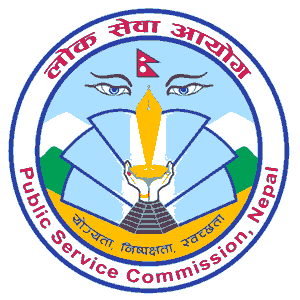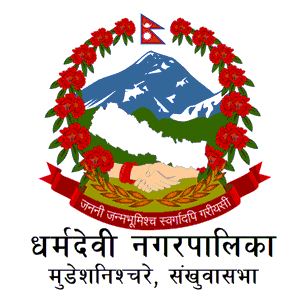Overview
Nepal National Library (Nepal Rastriya Pustakalaya) has a rich history that dates back to 1957. The library was initially housed in SikriDhoka, which is a part of the complex of Singha Durbar, the largest palace in Asia at the time. The library was later moved to its present location, the Rana palace called HariharBhawan, in 1961. The library has gone through several changes over the years, including the suspension of lending facilities to catalog the entire stock. Despite the changes, the library continues to serve as a valuable resource for readers and researchers in Nepal.
Establishment of Nepal National Library:
- The Nepal National Library was established by His Majesty’s Government in January 1957 (Poush 2013 BS).
- The core collection was the personal library of Rajguru Hem Raj Pandey, spiritual advisor to the King, which had been purchased for the nation in 1956.
- The collection was initially housed in SikriDhoka, a building within the complex of Singha Durbar, a Rana Palace modeled on Versailles.
- At the time, Singha Durbar was the largest palace in Asia.
- The library was merged with the Central Secretariat Library which was also housed in Singha Durbar.
- The total collection of books and periodicals at the time of merging was 34,292.
Evolution of Nepal National Library:
- The post of “Chairman” was created at the establishment of the library, and Mr. GangadharParajuli was the first postholder.
- Two assistant Pundits, one Bahidur, and four Ardalis were also appointed at the time of establishment.
- In 1961 (2017), the Nepal National Library was moved to its present location, the Rana palace called HariharBhawan, Pulchowk, Lalitpur, where it occupies the southern wing on the first floor of the building.
- In the early sixties, the library produced an impressive series of publications, making ancient handwritten texts available in printed form.
- Lending services were started in 1961 but were suspended later to embark on cataloging the entire stock.
- In the early eighties, it was decided to suspend lending facilities in order to catalog the entire stock.
- A full card catalog for the Nepali, English and Hindi collections was finally completed in 1988.
- Since then, the holdings have been made available to all for reading and reference, but circulation services have not been provided to preserve the collection.
International Cooperation and Achievements of Nepal National Library
Nepal National Library has received support and cooperation from various international organizations, which has contributed significantly to its growth and development over the years. Here are some notable achievements of the UNESCO/DANIDA project and other international collaborations:
UNESCO/DANIDA Project:
- The UNESCO/DANIDA project, which lasted for five years, brought major changes to the overall development of the Nepal National Library.
- One of the significant achievements of the project was publishing the Nepal National Union Catalogue, which provided a comprehensive list of books and materials available in the library.
- The project also provided modern equipment and human resource development to improve the library's facilities and services.
- The project promoted the publication of children's literature and established branch libraries in different parts of the country.
Japanese Cultural Grant Aid:
- The Nepal National Library received micrographic equipment such as microfilm cameras, processors, readers, book binding, and cutting machines from the Government of Japan to preserve and conserve the library's materials.
Assistance from JICA Nepal:
- JICA Nepal has assisted the Nepal National Library in setting up the new wing of the Children's Section and its promotional activities.
- It has also provided books on Nepal and other reports in both Nepali and English languages.
International Membership:
- Nepal National Library is a member of the Conference of Directors of National Libraries (CDNL), Conference of Directors of National Libraries of Asia and Oceania (CDNLAO), and UNESCO Network of Association Libraries (UNAL).
- Being a member of these international organizations has provided Nepal National Library with opportunities for networking, sharing resources, and collaborating with other libraries worldwide.
International cooperation has played a vital role in the development and achievements of the Nepal National Library. The UNESCO/DANIDA project, assistance from JICA Nepal, and membership in international organizations have helped the library to improve its facilities, services, and resources. These achievements have made the library a valuable resource for readers, researchers, and children in Nepal and beyond.
Children’s Library:
The Nepal National Library has a dedicated Children's Section that has been providing library services to young users since 1995. The section is located in a new building and has more than 4100 books in English, Nepali, and other languages. The collection includes colourful reference works such as dictionaries, encyclopedias, and Guinness books to attract young readers. The English books are classified according to the Dewey Decimal Classification, while Nepali and other language books are colour-coded. The section has published a catalogue of its books.
The Children's Section also organizes various programs such as video film shows, CD-ROM demonstrations, story-telling sessions, Origami, quizzes, and how-to-use-reference-books programs to engage young readers. With the assistance of UNESCO/DANIDA, the Nepal National Library has sponsored the publication of nine children's books, including seven titles from the Nepalese Society for Children's Literature (NESCHIL) and two titles from the Pokhara Public Library. These titles are available for sale at subsidized rates from Kathmandu bookshops, and requests for a free set of these publications will be considered from schools and public libraries (while stocks last).
Some of the notable titles published through this initiative include "Tilaure Ra Phulaure" by Ram Kumar Pandey, "Bajyai! Bajyai! Geet Gaaun" by Victor Pradhan and Bharatkumar Bhattarai, "Ma Birami Chhaina" by Ranjushri Parajuli, "China-Jana Hamilai" by Sharada Adhikari (Dhakal), "Bal katha" and "Hamro katha" by the Pokhara Public Library, "Guru-Ma-Pa" retold by "RUMU," "Asta Chiranjibi" by Bishwambhar Chanchal, and "Indrajali Rukh" (The Enchanted Tree) by Enid Blyton, translated by Ramesh Vikal.
Public Libraries:
The following is a list of public libraries in Nepal with their brief history, services, and contact information:
Sarbajanik Vidyabhawan Library, Dharan: This library was established in 1947 and taken over by the Municipality in 1965. It is affiliated with the Nepal National Library as the Eastern Development Regional Library since 1998. It offers a lending service and organizes various programs. UNICEF supports a children's library on the lower floor of the same building.
Contact Address: Dharan,
Tel: 977-25-526115
Nepal National Library, Kathmandu:
The Nepal National Library was formed in 1957 by merging the collection of Royal Priest Pundit Hem Raj Pandey with the Central Secretariat Library. The library now houses approximately 84,000 volumes of books, journals, and other materials in various languages.
Contact Address: Kathmandu
Pokhara Public Library, Pokhara:
This library was the first regional library affiliated with the Nepal National Library in 1995. The Municipality provides the building and two library staff, while the library is managed by an energetic team of volunteer executive committee members. The library collections are being built up and currently hold about 4,000 books. Sixty-five newspapers and magazines are regularly received, and approximately 100 readers visit the library each day. The Pokhara Public Library also serves as a center for a Mobile Library Service to five local communities based on schools and BPEP Resource Centres. It has been designated as a western point of American Center to provide information services to the local community.
Contact Address: Pokhara, Tel: 977-61-521855,
Mahendra Library, Nepalgunj:
Established in 1947, this public library has celebrated its golden jubilee and is housed in its own building in Tribhuwan Chowk. It holds an impressive collection of over 10,000 volumes and is the only library in the Nepalgunj Municipality. It was affiliated as the Mid Western Development Regional Library in 1998. However, this library is now facing financial problems in paying staff salaries.
Contact Address: Nepalgunj, Tel: 977-81-525492
Kailali Public Library, Dhangadi:
Established in 1957, this library was initiated by the local people and has its own building. It holds a bookstock of 7,000 volumes in Nepali, Sanskrit, Hindi, and English, and 82 newspapers and magazines are regularly received. It was affiliated to the Nepal National Library as the Far-Western Regional Library in 1998. It organizes a monthly program of talks and discussions with a literary theme. Contact Address: Dhangadi, Tel: 977-91-521535
Nepal National Library
Temporary Office location: Sanothimi, Bhaktapur
Bagmati Province, Nepal
Phone No.: +977-01-6639620
Email: info@nnl.gov.np
Website: www.nnl.gov.np




